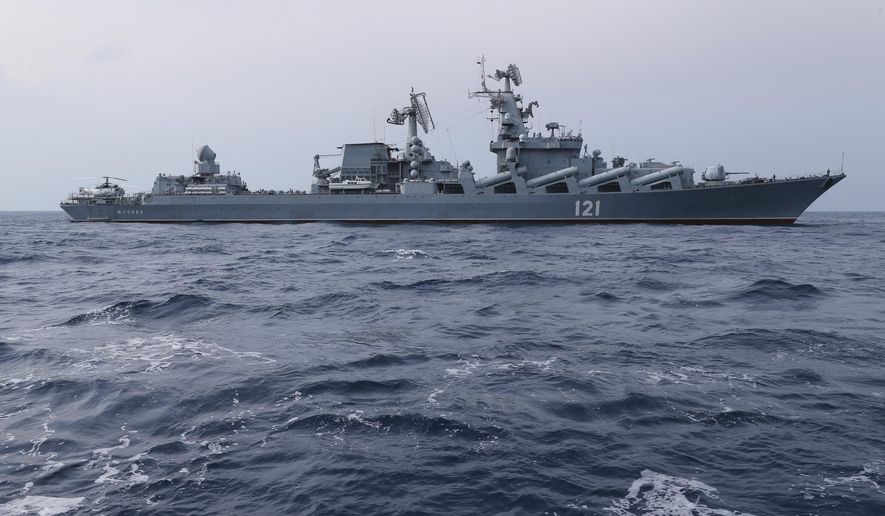The flagship of the Russian Navy’s Black Sea fleet did not have its radars in operation in the moments before it sank on April 14 when struck by a pair of Ukrainian Neptune anti-ship missiles.
According to the U.S. Naval Institute, the guided-missile cruiser Moskva could not see the threat from the Ukrainian weapons because its radar systems were not activated in time.
Photos of the Moskva taken immediately after the missile strike showed the radars in their “normal stowed position,” retired Navy Capt. Chris Carlson told USNI News on Thursday.
The missiles are believed to have struck the Moskva in the center of the ship just above the waterline. Ukrainian military drones spotted in the area could have been used to target and direct the missile strike, naval analysts told USNI.
“All they have to do is laze once or twice and then they have a feasible targeting solution,” Capt. Carlson said.
U.S. officials have denied providing Ukraine with the kind of specific information needed to successfully strike and sink the Moskva.
SEE ALSO: Russia assaults Mariupol steel plant for a second day
The radar systems aboard the Moskva that would have directed a counter-missile barrage were not activated, analysts said.
“If you’re not running it, your point defense (surface-to-air missiles) are not going to be playing,” Capt. Carlson said.
Much of the equipment aboard the Moskva needed to counter a missile strike was several years old at the time of the attack, analysts said.
“You’ve got old stuff, which means it’s temperamental,” Capt. Carlson said. “It’s hard to maintain and at-sea maintenance has not been a Russian strength.”
• Mike Glenn can be reached at mglenn@washingtontimes.com.




Please read our comment policy before commenting.